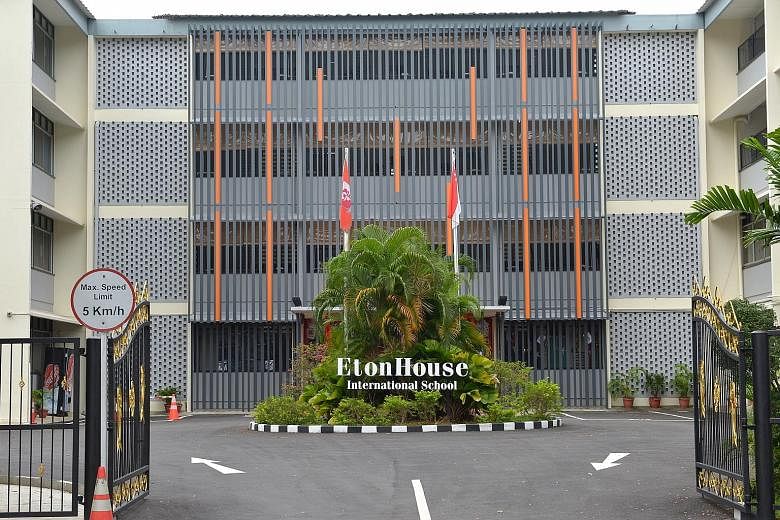Nexus and EtonHouse international schools have announced expansion plans amid growing demand from expatriate parents who have struggled to find places in local schools.
Nexus, which was awarded a new campus site in Aljunied by the Economic Development Board early this month, said that when its new $230 million campus is ready in 2018, it will be able to increase its student numbers from the current 900 at its Ulu Pandan campus to 2,000.
EtonHouse International, which has been running a primary school in Broadrick Road since 1998, will open a secondary school at the same site next year.
EtonHouse, which runs a kindergarten in Thomson Road, will open a primary school there next year.
Other schools here are also expanding, such as recent entrants Dulwich College and Gems Academy, as well as the more established ones such as the Australian International School. They attribute the recent increased demand from expatriates partly to the Government's policy of giving priority to Singaporeans for school admission.
Those who do land a place in the local schools have to pay much higher fees. With next year's fee hikes, international students attending local secondary schools will pay $800 a month, while those attending primary schools will pay $550.
The higher fees are a far cry from 2009, when they paid just $226 a month to attend a local secondary school and $156 for a primary school.
Average fees at international schools range from $25,000 to $35,000 a year.
The Ministry of Education (MOE) declined to say how many international students failed to gain Primary 1 places in local schools this year, but said the public school system is designed to cater mainly to the needs of Singaporean students.
About 9 per cent of students in national schools now are permanent residents and 5 per cent are international students.
"While MOE values the diversity that international students bring to our schools... we have to ensure that the needs of Singaporean students are adequately met first before considering the admission of international students," said a ministry spokesman.
Meanwhile, student numbers at international schools are growing. According to the latest annual report released by the Council for Private Education, there were about 45,000 students enrolled in the 30-plus international schools in Singapore last year.
Media reports two years ago estimated the number to be 40,000. The figures do not include students enrolled in pre-schools run by international schools.
The London-based International School Consultancy, which publishes global market reports, said enrolment in international schools worldwide has grown by 8.4 per cent per annum and total annual tuition fee income by 12.5 per cent per annum since 2009.
Enrolment is expected to climb further, both in Singapore and abroad.
Dr Yvonne McNulty, an associate lecturer at RMIT University Singapore who studies global mobility, said the size of the expatriate population continues to increase, albeit at a slower pace.
Data from the Ministry of Manpower shows that some 143,300 foreigners were here on employment passes in 2010, drawing a monthly salary of at least $3,300. This rose to 180,800 in June this year.
She said the expatriates coming here used to be in their 40s and 50s.
"Now, they are younger and on a localised package that doesn't include perks such as a car and sponsorship of school fees for their children.
" So despite the much higher fees, many try for a place in the local schools and, in recent years, the numbers I am tracking show that only one in three gets offered a place and, for most, it is not a school of their choice."
She said that despite rising fees for foreigners in local schools, there is no "middle option" for young expatriates on local packages as international schools cost $30,000 on average.
Four of six expatriate parents interviewed said they opted for an international school after failing to get a place in local ones.
Mrs A. Duncan, 36, a British housewife who tried placing her six-year-old daughter in a local school, said: "I like the local schools because of the good grounding in Chinese and maths, but I was given a place in a school that would be a two-hour bus ride away. So I had no choice but to turn to an international school and they charge double the fees ."
Ms Dorothy Phillips, 29, a housewife, said she and her husband had agreed to move to Singapore from New Delhi because of the renowned school system here.
"We were upset when we got here and realised that places in local schools are restricted. We are here to stay for the long run and wanted our children to integrate well with Singaporeans."


